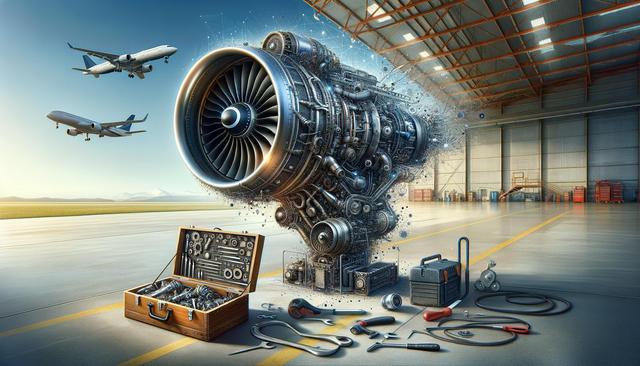The Role of Aviation Mechanics in Aircraft Safety
Aviation mechanics play a critical role in ensuring the safety, reliability, and performance of aircraft. Their work is deeply intertwined with aviation standards and safety protocols, making their responsibilities pivotal in the broader scope of aviation operations. These professionals are charged with maintaining and repairing aircraft systems, including engines, landing gear, brakes, and avionics. To meet the rigorous demands of the field, individuals must complete specialized Aircraft Maintenance Training that covers both theoretical knowledge and hands-on practice. Given the technical complexity involved, mechanics must stay updated with evolving technology and regulatory changes, particularly those related to safety inspections, environmental considerations, and operational efficiency.
In the United States, Aviation Safety Training is a mandatory component of professional development for aviation mechanics. This training focuses on hazard recognition, risk mitigation, and adherence to Federal Aviation Administration (FAA) regulations. Mechanics often work closely with companies that support aircraft maintenance and repair, many of which have internal programs to promote ongoing education and compliance. These companies are instrumental in aligning maintenance practices with international aviation safety norms.
Companies Supporting Aircraft Maintenance and Repair
Across the aviation industry, numerous companies specialize in maintenance, repair, and overhaul (MRO) services. These organizations provide essential support to airlines, private operators, and cargo carriers by ensuring aircraft remain airworthy and perform optimally. Their services often include:
- Scheduled maintenance checks (A, B, C, and D checks)
- Structural repairs and modifications
- Engine overhauls and diagnostics
- Avionics systems updates
These companies also collaborate with training institutions to meet Aviation Training Requirements, helping to prepare the next generation of aviation mechanics. By offering internships, apprenticeships, and certification programs, they bridge the gap between classroom learning and real-world application. Furthermore, they contribute to the Aviation Training Industry by investing in simulation labs, tool libraries, and continuing education for their technical staff.
The Path to Becoming an Aviation Mechanic
Entering the field of aviation mechanics typically begins with enrollment in accredited Aviation Training Programs. These programs, often offered by technical schools or community colleges, provide students with a foundation in aircraft systems, maintenance procedures, and regulatory compliance. In addition to classroom instruction, students must complete practical training under the supervision of experienced professionals. The duration and content of these programs vary, but most align with FAA standards to ensure graduates are eligible for certification exams.
To qualify for Aviation Training Jobs, candidates must pass a series of examinations that test their knowledge of general aviation mechanics, airframe systems, and powerplant operations. Once certified, mechanics may work in a variety of settings, including commercial airlines, cargo operations, and private aviation firms. Many also choose to specialize in specific aircraft types or systems, which can enhance career prospects and earning potential. Continuing education is vital in this field because of the fast pace of technological advancement in aviation.
Regulatory Standards and Safety Protocols
Aviation mechanics operate within a tightly regulated environment governed by national and international organizations. In the United States, the FAA sets the standards for maintenance procedures, technician certification, and safety inspections. Mechanics must adhere to these standards rigorously to maintain compliance and ensure the safety of passengers and crew. Regular audits, both internal and external, are conducted to verify that maintenance activities are performed according to approved protocols.
Safety protocols are not static; they evolve based on emerging data, new technologies, and lessons learned from incident investigations. Mechanics are required to undergo periodic Aviation Safety Training United States to stay current with these changes. This training includes modules on system diagnostics, human factors in maintenance, and error prevention strategies. By integrating these protocols into their daily routines, mechanics contribute significantly to reducing mechanical failures and improving overall flight safety.
Trends and Challenges in the Aviation Training Industry
The Aviation Training Industry is facing both opportunities and challenges as it adapts to new technology and evolving workforce demands. One significant trend is the integration of virtual and augmented reality tools into Aircraft Maintenance Training. These technologies allow students and professionals to simulate complex scenarios without the risk of real-world consequences, enhancing both comprehension and retention.
However, the industry also faces a looming shortage of qualified aviation mechanics, driven by an aging workforce and increased global demand for air travel. To address this gap, training institutions and maintenance companies are working together to make Aviation Training Programs more accessible. This includes offering flexible schedules, online learning options, and financial assistance. Additionally, recruitment efforts are focusing on attracting a more diverse pool of candidates to fill Aviation Training Jobs across the sector.
Educational institutions are also revisiting their curriculum to ensure that it meets modern Aviation Training Requirements. This includes more emphasis on digital systems, environmental sustainability, and data analytics. These updates aim to prepare technicians not just for today’s aircraft, but also for the advanced fleets of the future.
Conclusion: A Vital Profession in a High-Stakes Industry
For those considering a career in aviation mechanics, the path offers both technical challenge and professional reward. The role is essential to maintaining the integrity and safety of air travel, and it requires a commitment to continuous learning and regulatory compliance. As aviation continues to evolve, the demand for well-trained maintenance professionals will remain strong. By enrolling in accredited Aviation Training Programs and staying current with Aviation Safety Training United States, aspiring mechanics can position themselves for long-term success. With the support of companies dedicated to aircraft maintenance and repair, and a robust Aviation Training Industry, the future is promising for those who choose to specialize in this critical field.




Leave a Reply